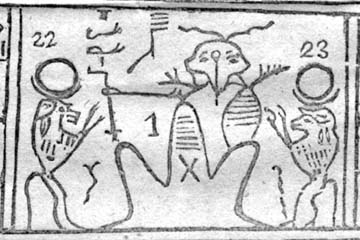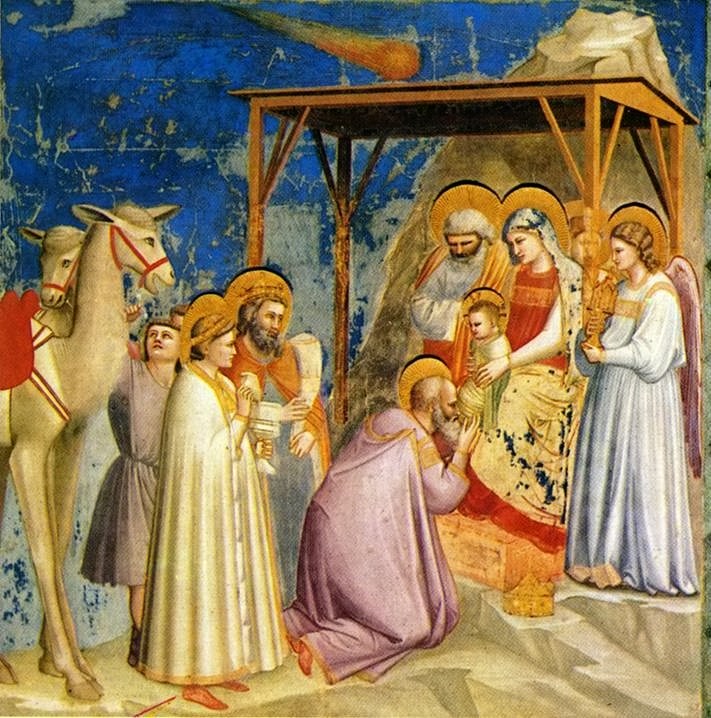|
Stars Proposed In Religion
Stars proposed in religion may include: * Kolob, a star proposed in Mormon cosmology * The Star of Bethlehem, the star that supposedly marked the birth of Christ * Wormwood (Bible), a star said to fall to Earth in the Book of Revelation * Seven Suns, prophesied to appear before the destruction of the earth in Buddhist cosmology See also * Central Fire, a fiery celestial body hypothesized by the pre-Socratic philosopher Philolaus to be positioned at the center of the universe, around which all other celestial objects revolve * Religious cosmology Religious cosmology is an explanation of the origin, evolution, and eventual fate of the universe from a religious perspective. This may include beliefs on origin in the form of a creation myth, subsequent evolution, current organizational form a ..., a way of explaining the origin, the history and the evolution of the cosmos or universe based on the religious mythology of a specific tradition Religion and science History of astrono ... [...More Info...] [...Related Items...] OR: [Wikipedia] [Google] [Baidu] |
Kolob
Kolob ( ) is a star described in the Book of Abraham, a sacred text of the Latter Day Saint movement, where it is described as the heavenly body nearest to the throne of God. Several List of denominations in the Latter Day Saint movement, Latter Day Saint denominations believe that the Book of Abraham was translated from an ancient Egyptian Joseph Smith Papyri, papyrus scroll by Joseph Smith, the movement's founder. While the Book of Abraham calls Kolob a "star", it also calls planets "stars", (noting "Confusion between the uses of the terms stars and planets"). and therefore some Latter Day Saint commentators consider Kolob a planet. Kolob also appears in the culture of the Church of Jesus Christ of Latter-day Saints (LDS Church), such as the Hymns of the Church of Jesus Christ of Latter-day Saints (1985 book), hymn, "If You Could Hie to Kolob." Doctrine and exegesis Description in the Book of Abraham The first published reference to Kolob is in the Book of Abraham, first ... [...More Info...] [...Related Items...] OR: [Wikipedia] [Google] [Baidu] |
Star Of Bethlehem
The Star of Bethlehem, or Christmas Star, appears in the nativity of Jesus, nativity story of the Gospel of Matthew Matthew 2, chapter 2 where "wise men from the East" (biblical Magi, Magi) are inspired by the star to travel to Jerusalem. There, they meet King Herod the Great, Herod of Judea, and ask him: Herod calls together his scribes and priests who, quoting Micah 5#Verse 2, a verse from the Book of Micah, interpret it as a prophecy that the Messiah in Judaism, Jewish Messiah would be born in Bethlehem to the south of Jerusalem. Secretly intending to find and kill the Messiah in order to preserve his own kingship, Herod invites the wise men to return to him on their way home. The star leads them to Jesus' Bethlehem birthplace, where they worship him and give him gifts. The wise men are then given a divine warning not to return to Herod, so they return home by a different route. Many Christians believe the star was a miracle, miraculous sign. Some theologians claimed that ... [...More Info...] [...Related Items...] OR: [Wikipedia] [Google] [Baidu] |
Wormwood (Bible)
Wormwood (Ancient Greek: ἀψίνθιον (''apsinthion)'' αψινθος (''apsinthos'') is a prophesied star or angel which appears in the Book of Revelation. Botanical etymology Wormwood, translated from ''αψινθος (Apsinthos)'' and לענה (''la'anah''), is historically believed to refer to a plant of the genus '' Artemisia'', likely either '' A. absinthium'' or ''A. herba-alba'', used metaphorically to mean something with a bitter taste. The English rendering "wormwood" additionally refers to the dark green oil produced by the plant, which was used to kill intestinal worms. In Revelation, it refers to the water being turned into wormwood, i.e. made bitter. Hebrew Bible The Biblical Hebrew word לענה (''la'anah''), translated into English as "wormwood", occurs nine times in the Hebrew Bible, seven times with the implication of bitterness and twice as a proper noun. New Testament The Greek word ''apsinthos'', which is rendered with the English "wormwood", is me ... [...More Info...] [...Related Items...] OR: [Wikipedia] [Google] [Baidu] |
Buddhist Eschatology
Buddhist eschatology, like many facets of modern Buddhist practice and belief, came into existence during its development in China, and, through the blending of Buddhist cosmological understanding and Daoist eschatological views, created a complex canon of apocalyptic beliefs. These beliefs, although not entirely part of orthodox Buddhism, form an important collection of Chinese Buddhist traditions which bridge the gap between the monastic order and local beliefs of Imperial China. Although the main source of writings describing eschatological beliefs in Chinese Buddhism are so called “apocryphal” texts, these are an invaluable source of information in the study of Buddhism as it was actually practiced, as the available monastic sources depicting Buddhism are merely the tip of an iceberg, of which the body is still mostly submerged and hidden from view (Zürcher (Perspectives) 169). These eschatological Buddhist groups began to appear in China from on (Overmyer 46), an ... [...More Info...] [...Related Items...] OR: [Wikipedia] [Google] [Baidu] |
Central Fire
An astronomical system positing that the Earth, Moon, Sun, and planets revolve around an unseen "Central Fire" was developed in the fifth century BC and has been attributed to the Pythagorean philosopher Philolaus. The system has been called "the first coherent system in which celestial bodies move in circles", anticipating Copernicus in moving "the earth from the center of the cosmos ndmaking it a planet". Although its concepts of a Central Fire distinct from the Sun, and a nonexistent "Counter-Earth" were erroneous, the system contained the insight that "the apparent motion of the heavenly bodies" was (in large part) due to "the real motion of the observer". How much of the system was intended to explain observed phenomena and how much was based on myth, mysticism, and religion is disputed. While the departure from traditional reasoning is impressive, other than the inclusion of the five visible planets, very little of the Pythagorean system is based on genuine observation. In re ... [...More Info...] [...Related Items...] OR: [Wikipedia] [Google] [Baidu] |
Religious Cosmology
Religious cosmology is an explanation of the origin, evolution, and eventual fate of the universe from a religious perspective. This may include beliefs on origin in the form of a creation myth, subsequent evolution, current organizational form and nature, and eventual fate or destiny. There are various traditions in religion or Religion and mythology, religious mythology asserting how and why everything is the way it is and the significance of it all. Religious cosmologies describe the spatial lay-out of the universe in terms of the world in which people typically dwell as well as other dimensions, such as the seven dimensions of religion; these are ritual, experiential and emotional, narrative and mythical, doctrinal, ethical, social, and material. Religious mythologies may include descriptions of an act or process of Creation myth, creation by a creator deity or a larger pantheon (gods), pantheon of deities, explanations of the transformation of chaos into order, or the asserti ... [...More Info...] [...Related Items...] OR: [Wikipedia] [Google] [Baidu] |
Religion And Science
The relationship between religion and science involves discussions that interconnect the study of the natural world, history, philosophy, and theology. Even though the ancient and medieval worlds did not have conceptions resembling the modern understandings of "science" or of "religion", certain elements of modern ideas on the subject recur throughout history. The pair-structured phrases "religion and science" and "science and religion" first emerged in the literature during the 19th century. This coincided with the refining of "science" (from the studies of "natural philosophy") and of "religion" as distinct concepts in the preceding few centuries—partly due to professionalization of the sciences, the Protestant Reformation, colonization, and globalization. Since then the relationship between science and religion has been characterized in terms of "conflict", "harmony", "complexity", and "mutual independence", among others. Both science and religion are complex social and c ... [...More Info...] [...Related Items...] OR: [Wikipedia] [Google] [Baidu] |




